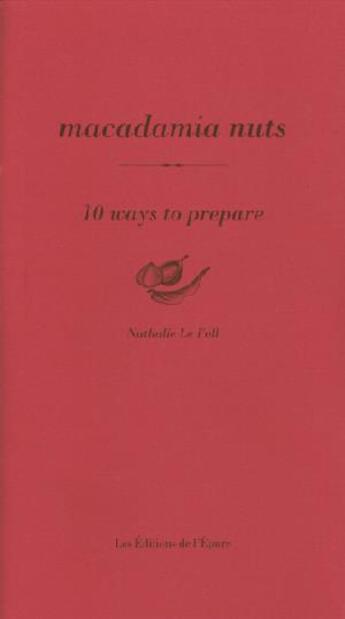Des idées de lecture pour ce début d'année !
Passionné(e) de lecture ? Inscrivez-vous
gratuitement ou connectez-vous pour rejoindre la
communauté et bénéficier de toutes les fonctionnalités du site !

In Australia, this nut is in all the different types of cooking, be they traditional or chefs' new gastronomy. Sweet or sour, when caramelised it mixes well with fowl, fish, sauces and works wonder with deserts. In 1830, while travelling on a scientific trip in a tropical forest in Australia, two botanists gazed in wonder at a beautiful tree. In the springtime, this tree became glorious and was covered with white flowers blooming on long drooping spikes. In the autumn the blooms turned into pretty green round nuts. The fruit inside was so delicate that it quickly became the Queen of the nuts.
A long time before Australia appeared on the explorers' maps, the Aborigines already were enjoying «Kendal Kendal». Later, it became known as macadamia to honour a Scottish scientist, Dr John McAdam, who had gone to Australia in 1855 to teach chemistry in a Melbourne College.
Since then, botanists have listed many different species both in Australia and South Africa. However, two particular ones bear the best quality nuts, namely Macadamia tetraphylla and Macadamia integrifolia, which produce the nuts we find on our markets today.
With its flawed roundness and its tender creamy white, the macadamia nut has a tempting texture. Soft and crunchy at once, sweet but not too sweet, it tastes like fresh butter with a touch of nutmeg.
Il n'y a pas encore de discussion sur ce livre
Soyez le premier à en lancer une !

Des idées de lecture pour ce début d'année !

Si certaines sont impressionnantes et effrayantes, d'autres sont drôles et rassurantes !

A gagner : la BD jeunesse adaptée du classique de Mary Shelley !

Caraïbes, 1492. "Ce sont ceux qui ont posé le pied sur ces terres qui ont amené la barbarie, la torture, la cruauté, la destruction des lieux, la mort..."